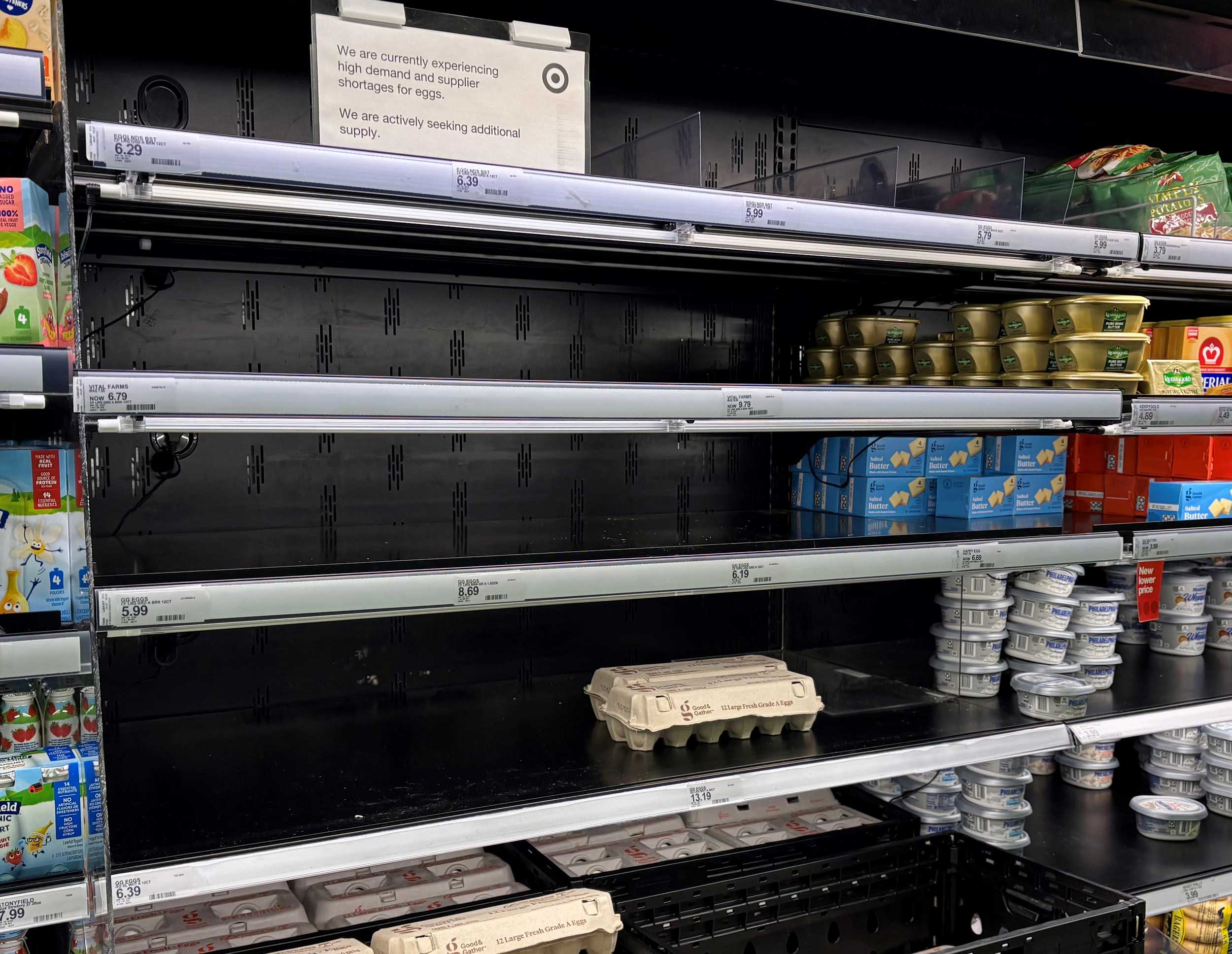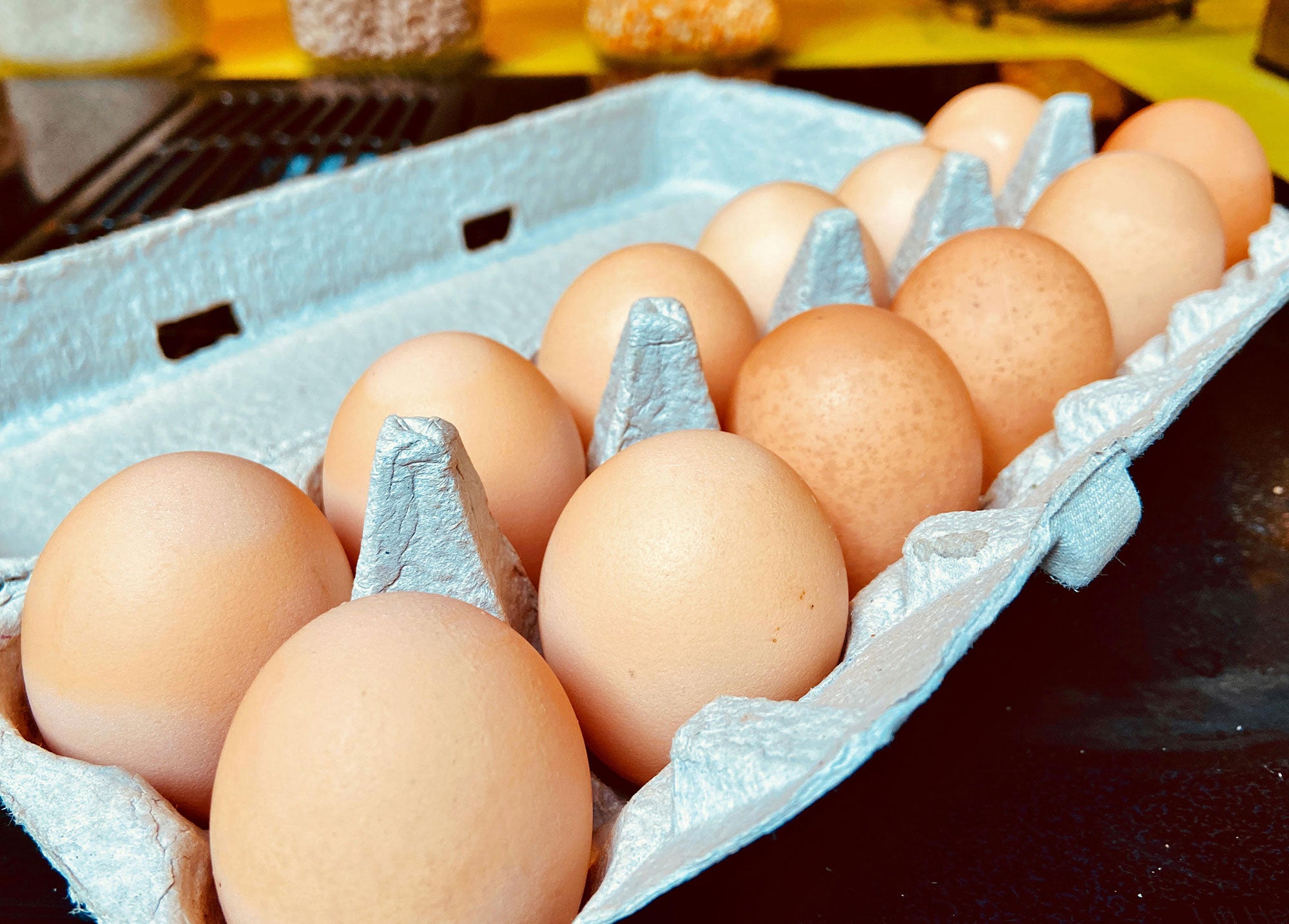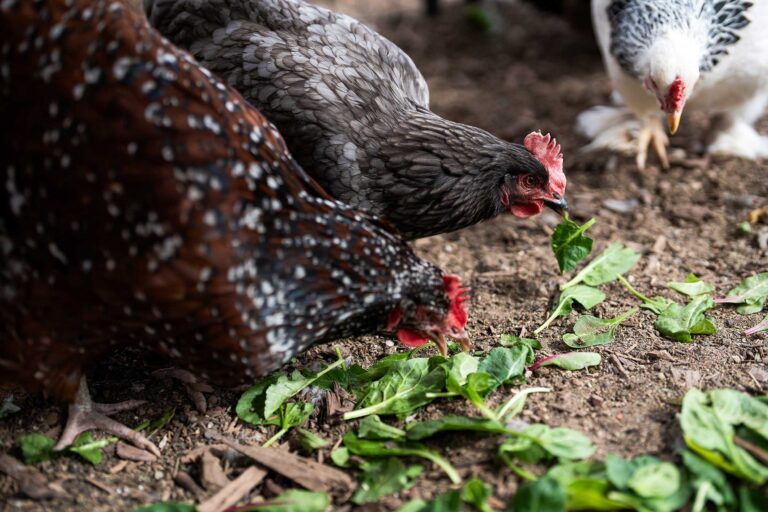Minnesota’s local egg producers are facing pressure from the rising egg prices nationwide and continued threat of bird flu.
Many of the area’s egg producers and poultry farmers have raised prices or changed farming practices, as the average cost for a dozen Grade A eggs reached $4.95 last month. In the Midwest, some prices reached $7.47 per dozen, according to USA Today.
Windhaven Farm in South Haven is one of several farms in the area that has been facing additional challenges. They already had some protective measures against bird flu from previous years, Alex Green, one of Windhaven’s owners, said, but it is still front of mind in many situations.
“We already put so many practices into place before all of this happened that it’s really just habit,” he said. “We had something from the weasel family getting into the chicken coops… when you come out one night and you see a pile of dead birds, with bird flu going on, your first thoughts are, ‘oh no.’ “
The farm has been trying to shoo away migratory birds, a frequent carrier of the illness, from stopping on the property. They are also keeping common birds like barn swallows from eating the feed meant for hens to save the feed and avoid infections.
Windhaven Farm produces between 30 to 50 dozen eggs a week. It is a certified egg seller in Minnesota, which Green said means they must adhere to certain practices, such as not reusing cartons.
As a result, the family’s farm has raised their prices slightly to preemptively protect against rising packaging costs, as well as difficulties buying new chicks from hatcheries strained by demand from backyard chicken keepers and those replenishing stocks depleted by bird flu.
“We did raise our egg prices,” Green said. “A lot of that was to hedge ourselves against increased packaging costs.”

TC Farm, a group of family farms in Minnesota, is also finding it hard to get birds from hatcheries.
Jack McCann, who founded TC Farm with his wife, said some of the organization’s farms have been pushed to raise their egg prices as well, due to difficulties with maintaining hen supplies, rising carton costs and volatile feed prices.
TC Farm’s egg costs are sitting at about $7 and have risen around 2 percent per year for the past decade, McCann said, significantly under nationwide prices. Egg prices last month were 53 pecent higher than in January 2024, according to the U.S. Department of Agriculture’s February 2025 Food Price Outlook.
McCann said many of the farms he works with have been trying to keep their birds inside as much as possible and encourage customers to reuse cartons for new eggs.
“It’s a little bit difficult to keep them inside all the time and still raise the product that you want to be raising,” he said. “And of course we’ve been suffering from huge feed price changes… so the combination of those two things have been pretty difficult for the farmers.”
Despite the continued challenges, both Green and McCann said their businesses are somewhat protected from price shocks because they don’t sell their eggs in traditional grocery stores.
“We’ve increased our prices a little bit, but not remotely as much as the grocery store, so the net effect has actually made it a better value to buy from an independent farmer,” McCann said.
He also said he does not see bird flu improving or egg prices easing any time soon, especially as the U.S. does not vaccinate birds for bird flu.
“All of this egg pricing is completely a self-inflicted thing. If the federal government allowed people to vaccinate their birds, then they wouldn’t get the bird flu and die,” McCann said.


The U.S. does not currently allow bird flu vaccinations for poultry, and American farmers instead rely on biosecurity measures and culling infected stocks.
The added stressors have taken a slight mental toll on McCann’s family and some of the farmers he works with.
“You’re used to that stress, but you add on another unknown that you can try to minimize, but you can’t really stop … there’s nothing we can do, you just have to hope for the best,” he said.
Robin Heinen, owner of St. Joseph’s small-scale farm Triple H Acres, has also slightly raised prices for many of the same reasons and said she is unsure how long the additional price pressures will last.
Though Triple H Acres has not faced any problems from bird flu, Heinen said she worries that the response to the illness and higher egg prices could push large egg producers to decrease product quality.
“With the price of how everything is now, are farmers going to start cutting more corners?” she said. “The biggest thing to me is, what are they going to do to try and bring these egg costs down, and is that going to lower the health benefits of eggs?”
But until the challenges for egg producers ease up, the three farmers said the best thing to do is to get connected with the local food supply by supporting local farmers.
“Support your neighbor, support your farmer, support your community,” Green said. “We can usually do it better and faster and respond to whatever you need.”
Reporting by Teagan King, St. Cloud Times


:max_bytes(150000):strip_icc()/FrenchWheat-0ce1055b57404976a7452407e6634f6a.jpg)
:max_bytes(150000):strip_icc()/Close-Emerged-Corn-Temple-Rhodes-ea1e3fcc766046998fe27a711e8617a5.jpg)






:max_bytes(150000):strip_icc()/Corn20planting-1-2000-36028ede74ed4ce08896f21ce6a9c5af.jpg)
:max_bytes(150000):strip_icc()/50700705632_ba98e91130_k-2-2000-2a1e63cc2630404ba41279b66c320253.jpg)